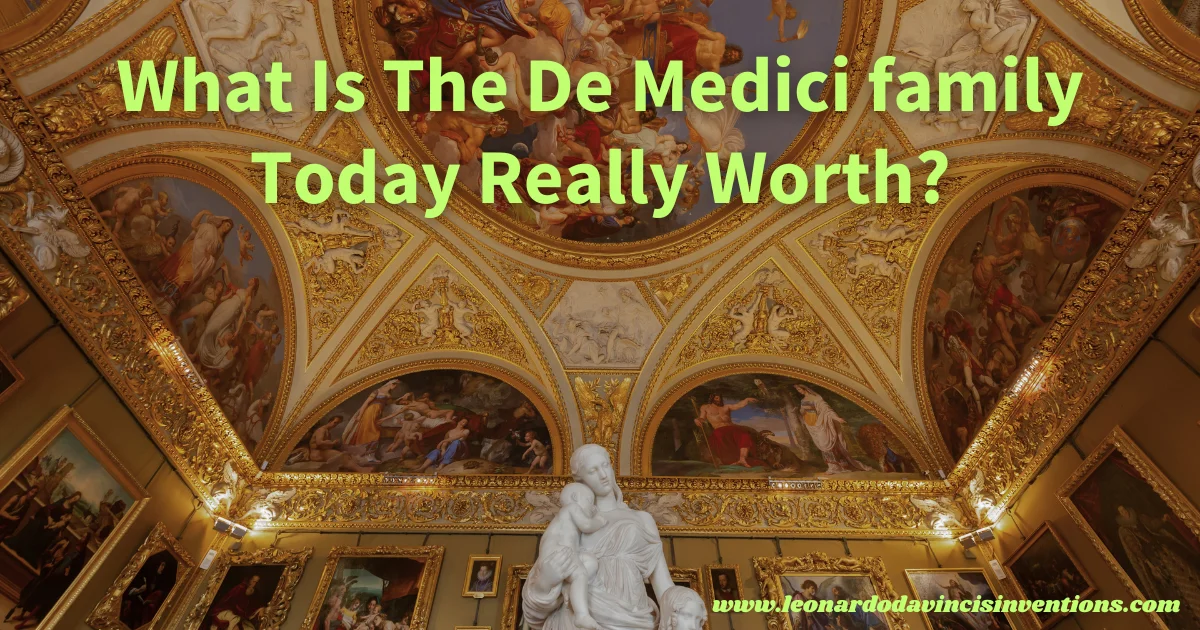
The de Medici family today is surrounded by stories of old wealth, art, and influence. Many people wonder how much of their fortune is left.
Determining the current value of the Medici family can be challenging. This article explores the family’s historical significance, the remnants of their wealth, and how modern descendants manage their legacy.
Modern estimates suggest that the de Medici family no longer holds the vast fortune it once did, with most of their historic wealth fading over the centuries.
Some family members, such as Prince Lorenzo de’ Medici, are still active in public life and celebrate their heritage.
They do not control anything close to the wealth or power their ancestors once had. Today, the Medici name carries more historical prestige than actual financial wealth.
The Legacy and Wealth of the De Medici Family Today
The Medici family’s story has had a considerable influence on European history, particularly in the realms of banking, art, and politics. Their heritage continues to shape the city of Florence.
Even if the family’s direct wealth is no longer visible, their impact remains strong. Their legacy continues to garner worldwide attention.
Medici Banking Dynasty and Its Influence on Renaissance Wealth
The Medici banking dynasty began in the 14th century. They quickly rose to dominate Florence’s economy.
Their bank expanded throughout Europe, helping the family gain political power and social status. The Medici’s wealth funded art, science, and culture, supporting figures like Michelangelo and Leonardo da Vinci.
During their peak, the Medici bank held significant assets for the Papacy and royal families. Their ability to lend money to rulers and the church was key to their success.
By the late 1400s, changing economies and poor management led to the bank’s decline. Today, estimates of their former fortune put it at hundreds of millions in modern value, though much of this wealth vanished centuries ago.
Medici Family Estates and Palaces in Modern Florence
Many Medici family estates and palaces still stand in Florence as reminders of their legacy. Famous buildings like the Palazzo Medici Riccardi and Palazzo Pitti once served as symbols of power.
These palaces are now key heritage sites of the Medici family, attracting thousands of visitors each year. Significant Medici residences have been converted into museums or official buildings.
The Uffizi Gallery, built initially as offices by the Medici, now houses their art collections. Their architectural choices influenced Tuscan style throughout Italy.
The Medici family’s impact on Florence is evident in its art and architecture. Guides to their landmark properties can be found at Leonardo da Vinci Inventions: Medici Family.
The Survival and Succession of the Medici Bloodline
The Medici bloodline ended with Anna Maria Luisa de’ Medici’s death in the 18th century. She was the last direct heir, and with her death, the main Medici line ended.
No current rulers or influential figures from the Medici family remain in Florence. If modern descendants exist, they are distant and not involved in present-day power or society.
The end of the Medici family marked a shift in Florence and Tuscany’s rule. Their legacy survives through historic sites, art collections, and scholarly work.
For more details on questions around the Medici family today, see Is There a Medici Family Today?.
Art, Power, and Politics: The Enduring Impact of the Medici Family Today
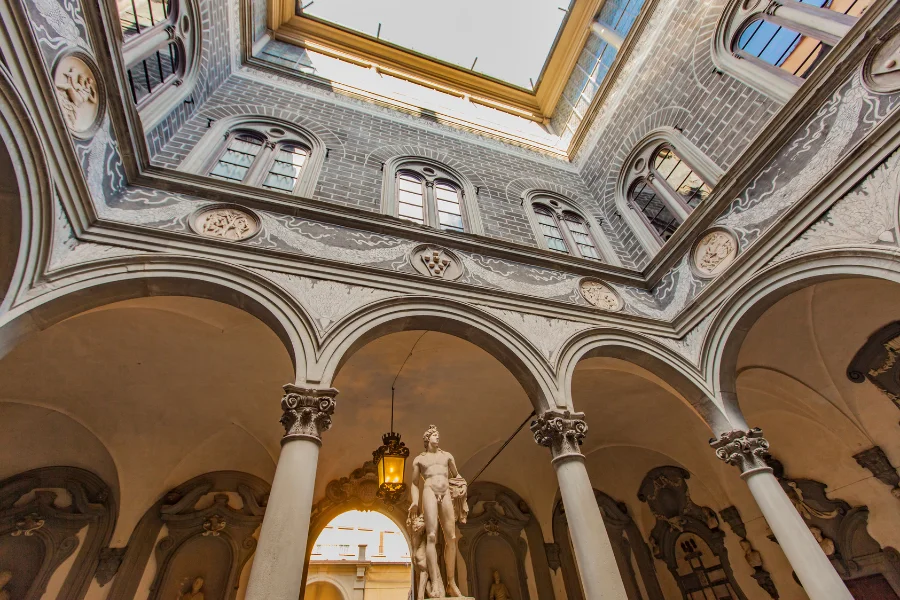
The Medici family’s footprint can still be seen across Florence and much of modern Italy. Their influence extends to artistic achievements, political systems, and contemporary nobility.
Patrons of the Arts: Medici Contributions to Culture and Society
The Medici were unrivaled patrons of the arts during the Renaissance. Their investments led to works by artists such as Leonardo da Vinci and Michelangelo.
They commissioned statues, paintings, and buildings to transform Florence into a cultural hub. Many masterpieces funded by the Medici family continue to draw millions of visitors to Florence.
Key Medici heritage sites preserve this artistic legacy, such as the Uffizi Gallery and the Palazzo Pitti. Their role as patrons of art shaped the course of European art history.
The Medici family’s cultural impact remains visible in museums, libraries, and urban design throughout Tuscany and beyond.
Political Power and Influence in Italy and Europe
The Medici rose from wealthy merchants and bankers to leaders who guided the destiny of Florence and Tuscany. Their banking empire allowed them to gain political power and influence the Papacy and European royalty.
They became dukes and grand dukes, marrying into royal families across the continent. Their legacy is evident in how governments utilize finance and alliances to gain power, a method pioneered by the Medicis in Italy and Europe.
Although the family’s direct political influence ended in the 18th century, their political and financial maneuvering model continues to influence modern states and families. The Medici’s influence on the European political system is recognized as a foundation of current political thought.
From Ruling Florence to Present-Day Nobility
The Medici dynasty ruled Florence for centuries, becoming symbols of power and culture in Italy. Their palaces, including the Palazzo Medici Riccardi, stand as reminders of their authority.
The Medici line ended in 1737, but some connections to the bloodline remain through surviving heirs and distant descendants. Today, the legacy endures in Florence, where the Medici name remains well-known.
The influence of the Medici heritage is still evident in modern Florence through restored palaces, art collections, and festivals that honor their history.
The Medici Family’s Modern Descendants and Their Present-Day Worth
The Medici bloodline once held immense wealth and influence in Italy, shaping Florence and Europe as bankers, rulers, and arts patrons. Today, the Medici family’s name evokes a rich history, but their current status vastly differs from the Renaissance era.
Heirs and Lineage: Tracing the Medici Family Tree
The Medici family’s direct line ended in the 1700s with Anna Maria Ludovica de’ Medici’s death. After centuries of ruling Florence as wealthy merchants and nobles, their bloodline scattered across Europe through marriages and distant relatives.
Some claim a connection to the Medici dynasty today, but documentation is often weak or based on broader family branches. Modern figures like Prince Lorenzo de’ Medici identify as descendants, but these links rarely carry succession rights, power, or fortunes.
Medici Descendants Today: Estates, Heritage Sites, and Status
Although the Medici dynasty no longer rules Florence, its legacy endures. Present-day Medici descendants, including those connected through distant branches, no longer own the immense estates their ancestors once held.
Many of the original Medici palaces and villas are now heritage sites open to the public. The Italian government, museums, or the city of Florence manage most of the Medici heritage sites.
The Medici family today does not possess the same wealth, power, or ownership in Tuscany as their ancestors did. Their lasting influence stems from their impact on art, politics, and culture, rather than their present-day wealth or possessions.
The End of the Dynasty and the Lasting Medici Legacy
When the Medici line ended, so did their direct rule and concentrated wealth. However, the family’s impact continues through Florence’s art, architecture, and cultural institutions.
The Medici patrons left Florence with iconic sites like the Uffizi Gallery and Palazzo Pitti. The Medici family’s contributions to Renaissance art and politics still shape Italy’s reputation in Europe.
No surviving Medici heir today holds the former power or extraordinary fortune of their ancestors, but the name remains famous worldwide.
Frequently Asked Questions
The Medici family was one of the most influential dynasties in European history. Their legacy encompasses political power, financial success, and contributions to art and culture.
Are there still Medici families today?
Direct male descendants of the main Medici line died out in the 18th century. Some distant relatives and families with Medici ancestry live in Italy and other countries.
Who inherited the Medici fortune?
After Anna Maria Luisa de’ Medici died in 1743, the family’s key possessions passed to the ruling House of Lorraine through a legal arrangement. Many buildings and treasures became the property of the Tuscan state.
Does the Medici house still exist?
The Medici house no longer exists as a central, ruling family. While some claim lineage, the main ruling line of the Medici family ended centuries ago.
Some buildings and art collections tied to the family still stand in Florence.
How much money would the Medici family have today?
At their peak, the Medici fortune was vast. Some estimates say the family controlled over $100 billion in today’s money.
How did the Medicis lose their money?
Much of the Medici wealth was lost through mismanagement, expensive political campaigns, and frequent wars. Later generations faced bank failures and increasing debts.
The family’s influence also declined as other powers rose in Europe.
What was the dark side of the Medici family?
There were reports of political intrigue, corruption, and even murder. Some members used violent means to keep power and control over Florence.
Accusations of poisoning and secret plots followed confident family leaders.
Why did the Medici bloodline end?
The last direct heir, Anna Maria Luisa de’ Medici, died in 1743 without children. The lack of male heirs and marriage connections contributed to the end of the family line.
Which Medici died of syphilis?
Some historians believe Alessandro de’ Medici, Duke of Florence, suffered and died from syphilis. Medical records from that time do not confirm all details.
Are there any descendants of the De Medici family?
Some people today claim descent from different branches of the Medici family. The main line ended in the 1700s.
Most living descendants are not directly connected to the famous branch that ruled Florence.
Is the Medici Bank still around?
The Medici Bank was once one of the largest banks in Europe. It closed in the late 1400s because of poor management and financial scandals.
The bank does not exist today.
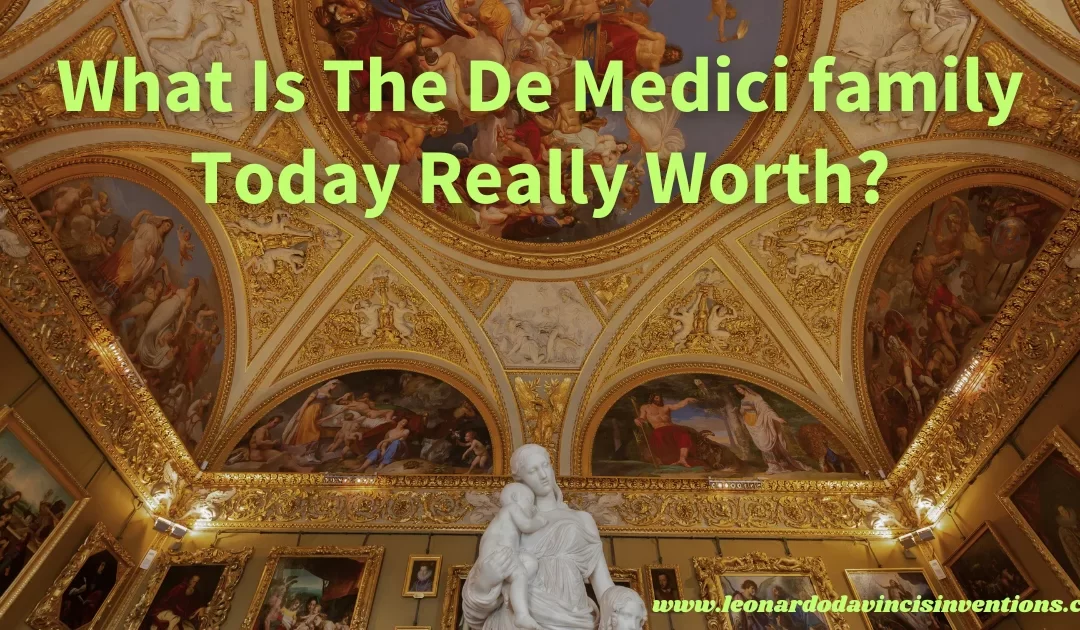
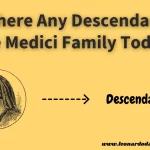
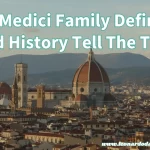

 Leonardo Bianchi,
the creator of Leonardo da Vinci's Inventions.
Thank you for visiting
Leonardo Bianchi,
the creator of Leonardo da Vinci's Inventions.
Thank you for visiting